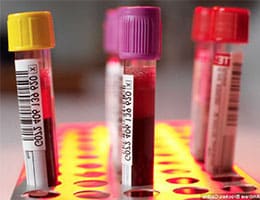 The proportion of red blood cells in the blood is called hematocrit . A red blood cell, in turn, is a globose cell.
The proportion of red blood cells in the blood is called hematocrit . A red blood cell, in turn, is a globose cell.
Red blood cells, also called erythrocytes or red blood cells , are the cells that appear in greatest quantity in the blood. Its function is to transport oxygen from the lungs to the various tissues, organs and systems of the body, a mission they carry out thanks to a protein known as hemoglobin .
Hematocrit is obtained after performing a blood test in a laboratory. The concept refers to the solid fraction of the anticoagulated sample, which is separated from the liquid phase. Almost all hematocrit is made up of red blood cells, hence its most common definition.
Normal hematocrit values depend on the references chosen by each laboratory. Typically, average values are between 41% and 51% for men and between 36% and 45% for women. This difference is due to the fact that men have greater muscles than women and therefore require more oxygen .
The figures may deviate from this average due to age, altitude and other factors. An abnormal hematocrit can also reveal various medical conditions, such as dehydration or a blood problem such as anemia (which is characterized by not enough red blood cells) or polycythemia vera (whose main feature is precisely the opposite of that of anemia, that is, an excessive number of red blood cells).
It is important to note that the hematocrit is part of the hemogram , which is the study that allows us to know the composition of the blood and serves as a diagnostic tool. The blood count also includes the white blood cell count, the number of platelets , and other indicators.
In short, hematocrit is a test that is used to measure the amount of blood containing red blood cells in the context of a blood test. If the result is a level that is too high or low, then we may be facing a health problem related to blood, among other disorders.
 The complete blood count , also known as the complete blood count , is what is normally referred to as a blood test , and is often ordered by doctors to understand the health status of their patients, but also to make a more precise diagnosis. when they suspect the presence of certain diseases whose symptoms are not very defined. Hematocrit is an important part of this test.
The complete blood count , also known as the complete blood count , is what is normally referred to as a blood test , and is often ordered by doctors to understand the health status of their patients, but also to make a more precise diagnosis. when they suspect the presence of certain diseases whose symptoms are not very defined. Hematocrit is an important part of this test.
In some cases, doctors routinely ask their patients for a hematocrit, but also if they believe a case of anemia or polycythemia vera is possible. The most common symptoms of the first of these two diseases are the following:
* difficulty breathing;
* abnormal tiredness or weakness;
* too frequent headaches;
* dizziness;
* low temperature in the feet or hands;
* pale skin;
* chest pains.
Regarding the frequent symptoms of polycythemia vera, we can mention the following:
* double or poorly defined vision;
* difficulty breathing;
* headaches ;
* itching;
* skin redness;
* fatigue;
* excessive sweating.
The procedure that health professionals carry out during the hematocrit test involves taking a blood sample from the patient's arm by inserting a small needle into one of their veins. Once this step has been completed, place the blood in a bottle or test tube appropriately identified with the patient's personal data for subsequent analysis. It is normal to feel slight discomfort at the time of the prick or when the specialist removes the needle, but it should never cause great pain or last for more than a few minutes.
